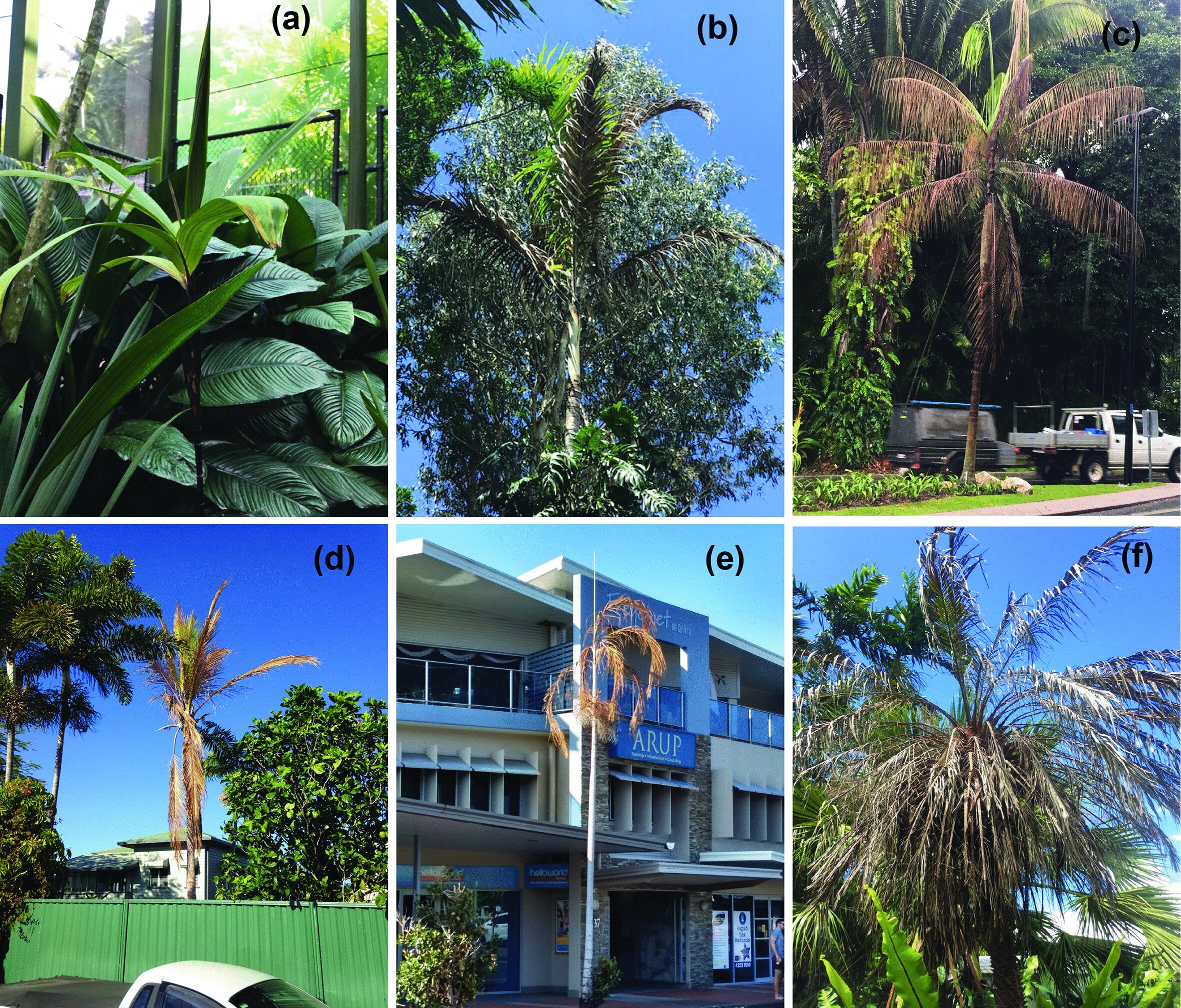#The new species of bacteria killing palms in Australia

“#The new species of bacteria killing palms in Australia”

As reported in the International Journal of Systematic and Evolutionary Microbiology, a newly-discovered bacterium named Candidatus phytoplasma dypsidis has been found to cause a fatal wilt disease.
In 2016, several ornamental palms within a conservatory in the Cairns Botanic Gardens, Queensland, died mysteriously. A sample was taken from one of the diseased plants and investigated by Dr. Richard Davis and colleagues from the Australian Government Department of Agriculture, Water and the Environment, and state and local government. They compared the characteristics and genome of the bacterium identified as the cause of the disease and found the bacterium was similar to other species of Candidatus phytoplasma, many of which are responsible for disease epidemics in palms elsewhere, but was different enough to be an independent species. “When the laboratory testing indicated it was something close to, but not the same as, devastating palm pathogens overseas, we were very surprised,” said Dr. Davis.
“At first we thought it was most likely an unrelated fungal disease. Almost as an afterthought, I suggested we screen for phytoplasma because there are some very bad phytoplasma diseases of palms moving around the world, including in neighboring Papua New Guinea,” he explained.
So far, infection with Candidatus phytoplasma dypsidis has been found to cause disease in 12 different species of palms, including Cocos nucifera, which produces coconuts. “Although palms are not grown as a cash crop in Australia, they are important ornamental garden and amenity plants. Coconuts and other palms are an economically significant component of Australia’s tourism industry in the tropics,” said Dr. Davis.
“Palms take on a much greater significance in most of the countries near Australia, in southeast Asia and the Pacific, where coconuts are ‘the tree of life.’ It is important to raise awareness of a new disease threat, such as this, so that regional biosecurity measures can be prioritized.”
The bacterium is thought to be spread from plant-to-plant by insects that feed on phloem, the tissue which transports nutrients around the plant, said Dr. Davis: “It seems certain from our observations of how this thing has spread through the local area that there must be an insect vector. Finding out what vector species are involved is a vital next research priority.”
Outbreaks of exotic plant pathogens in Australia are rare due to the country’s stringent biosecurity measures. “Australia, New Zealand and the Pacific island countries and territories have an enviable plant and animal health status compared to much of the rest of the world. Because we are islands, we have escaped many significant plant disease threats that have traveled around the world, over history,” explained Dr. Davis. “As biosecurity plant pathologists for the Australian Government Department of Agriculture, Water and the Environment, our team’s main role is to look out for and detect incursions of exotic plant pathogens. We usually do this in remote parts of Australia’s north, so to come across something much closer to home in the suburbs of Cairns, in far North Queensland, Australia, was unusual. However, we have no evidence to suggest this is an incursion from overseas because it is a unique organism. It may well be indigenous to Australia and some as yet unknown factor has triggered a disease outbreak.”
Dr. Davis is concerned that this new disease could spread outside of Cairns and affect palm populations further north. “North of Cairns, we have threatened ecological communities of fan palms which are of great environmental significance,” he said. It is important for Dr. Davis and his team to continue to monitor the spread of Candidatus phytoplasma dypsidis. A number of questions remain, including which insect vectors are spreading the disease, and whether the bacterium is capable of infecting other types of plant, including important crops such as bananas.
Phytoplasma effector proteins devastate host plants through molecular mimicry
Lynne M. Jones et al, ‘Candidatus Phytoplasma dypsidis’, a novel taxon associated with a lethal wilt disease of palms in Australia, International Journal of Systematic and Evolutionary Microbiology (2021). DOI: 10.1099/ijsem.0.004818
Provided by
Microbiology Society
Citation:
The new species of bacteria killing palms in Australia (2021, May 27)
retrieved 28 May 2021
from https://phys.org/news/2021-05-species-bacteria-palms-australia.html
This document is subject to copyright. Apart from any fair dealing for the purpose of private study or research, no
part may be reproduced without the written permission. The content is provided for information purposes only.
If you liked the article, do not forget to share it with your friends. Follow us on Google News too, click on the star and choose us from your favorites.
For forums sites go to Forum.BuradaBiliyorum.Com
If you want to read more Like this articles, you can visit our Science category.




